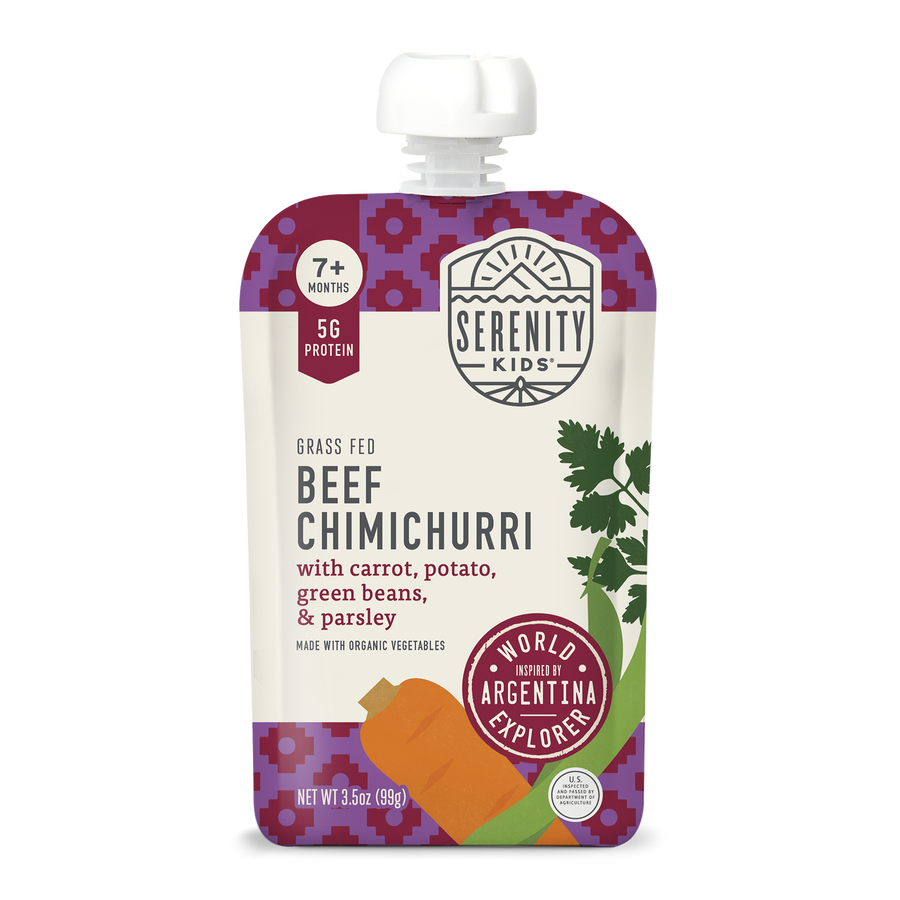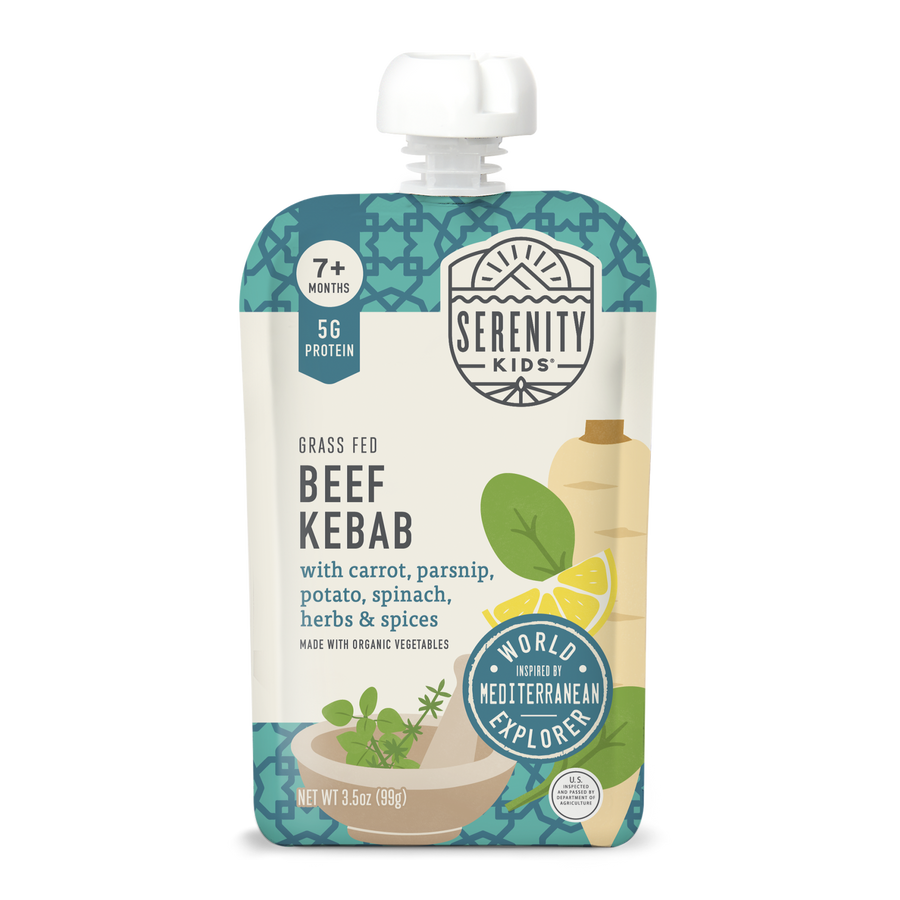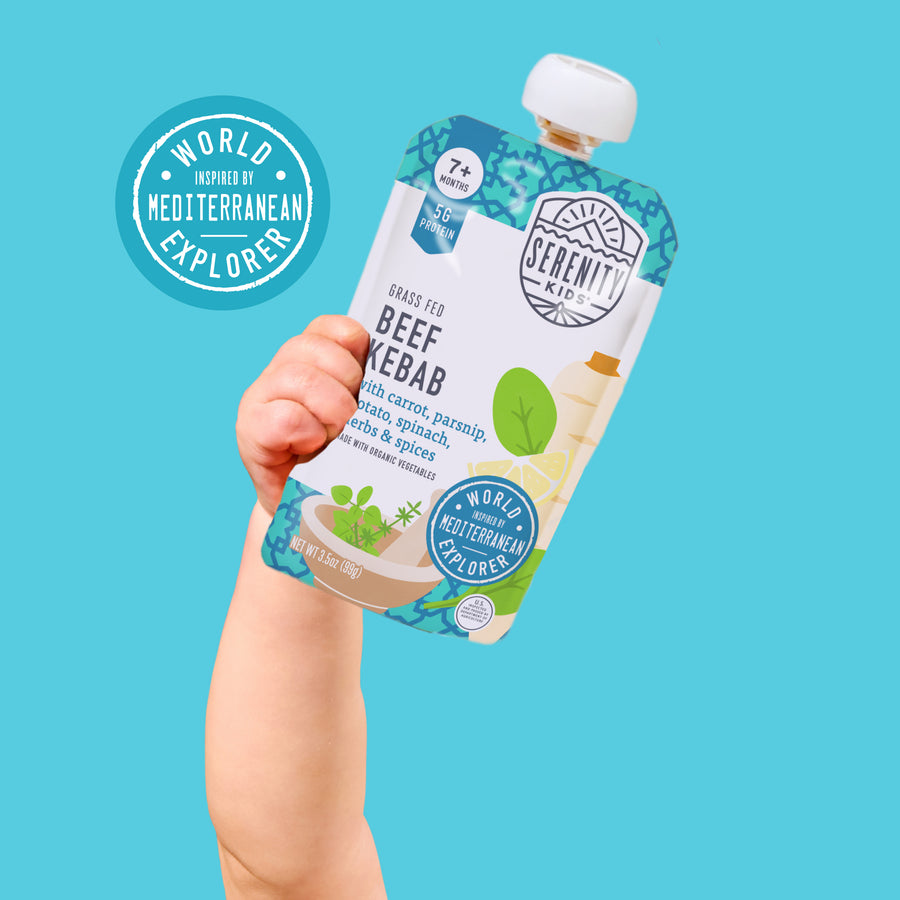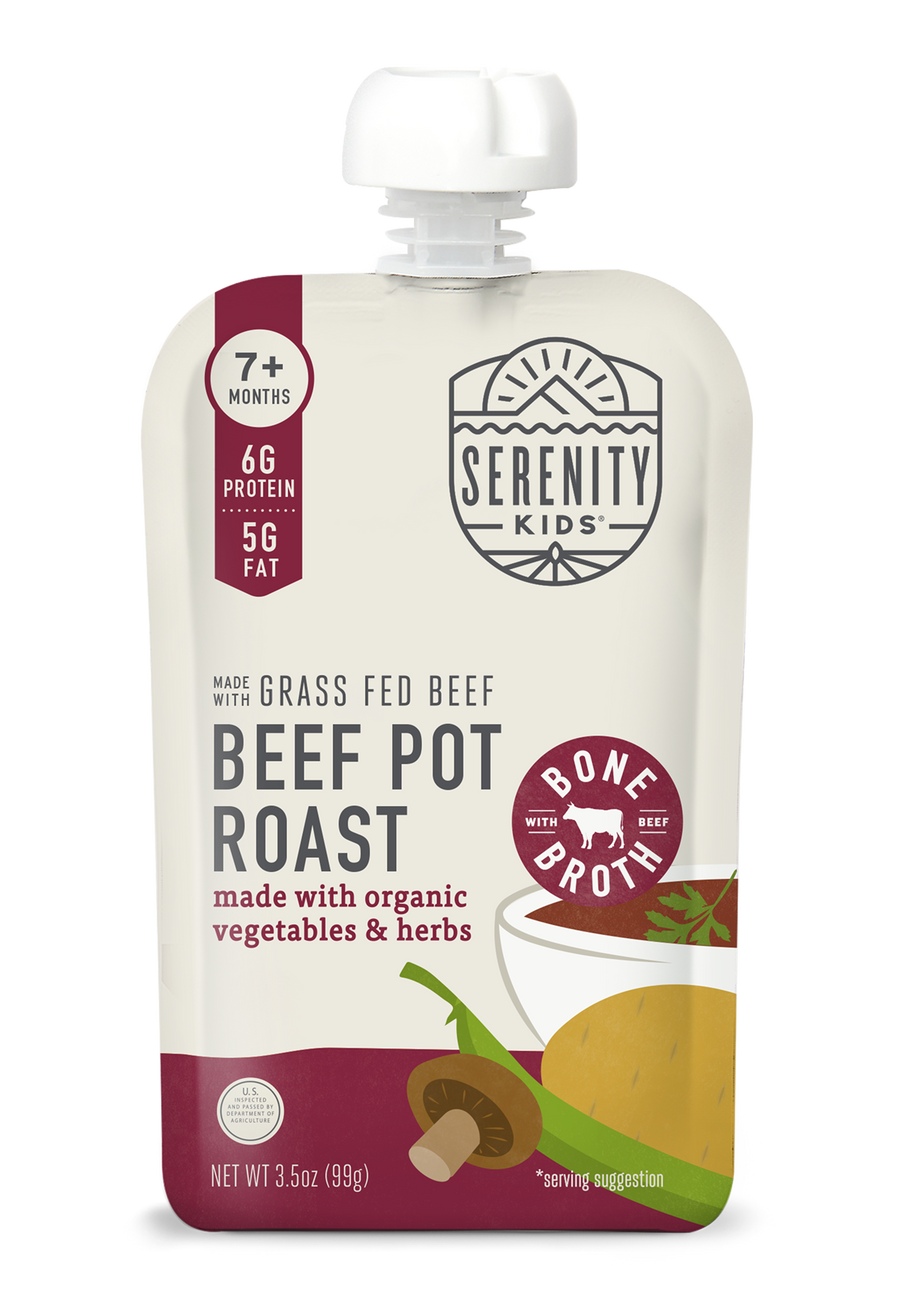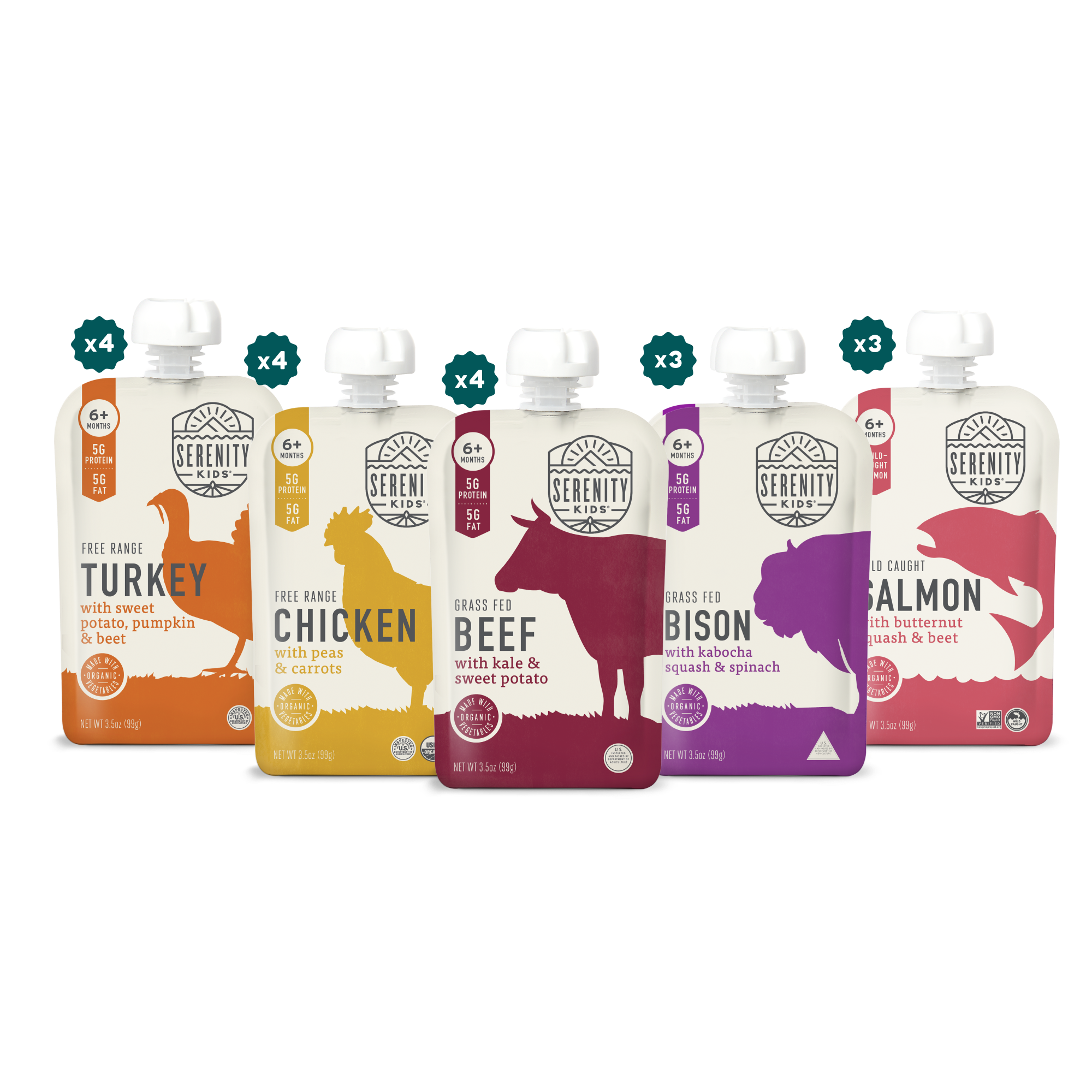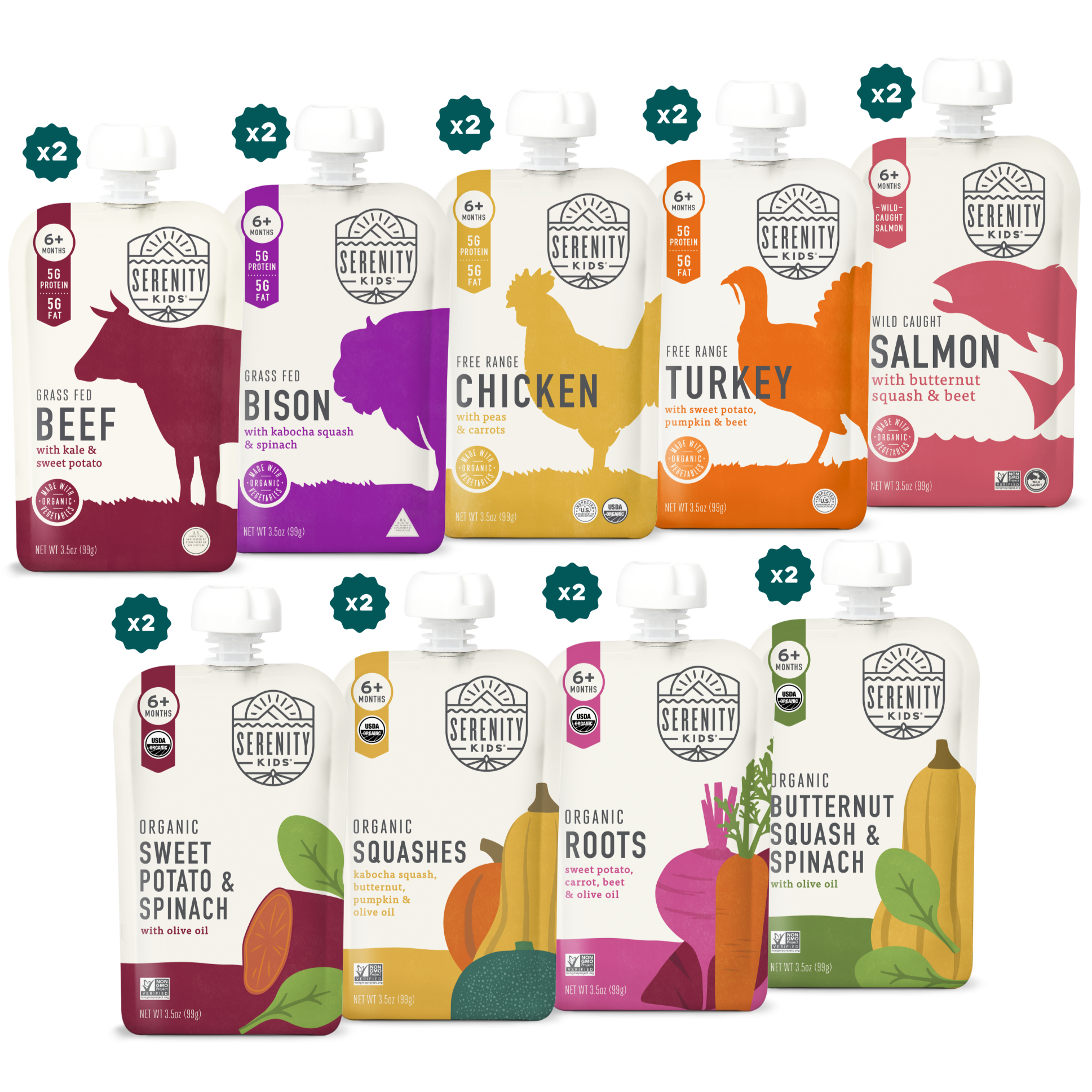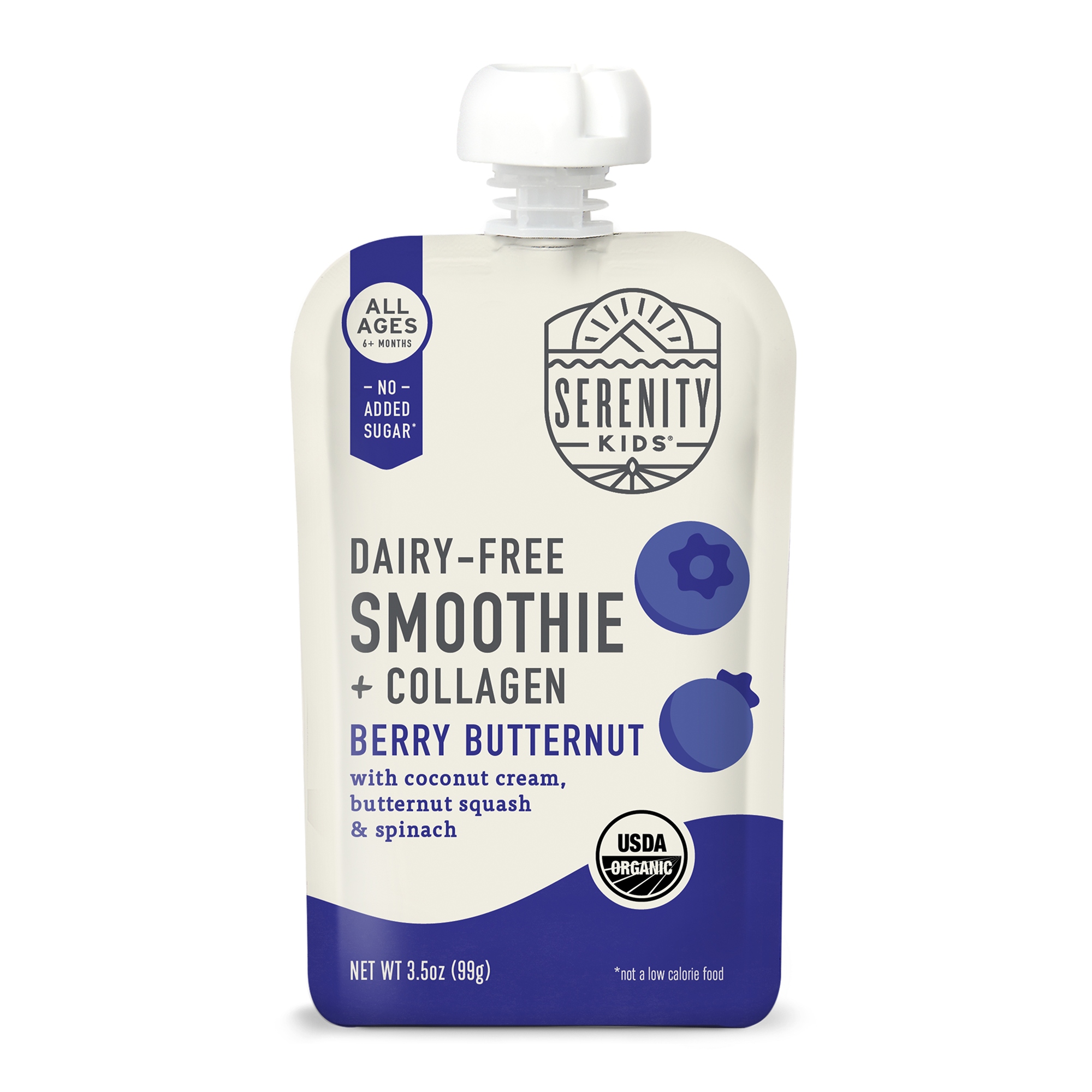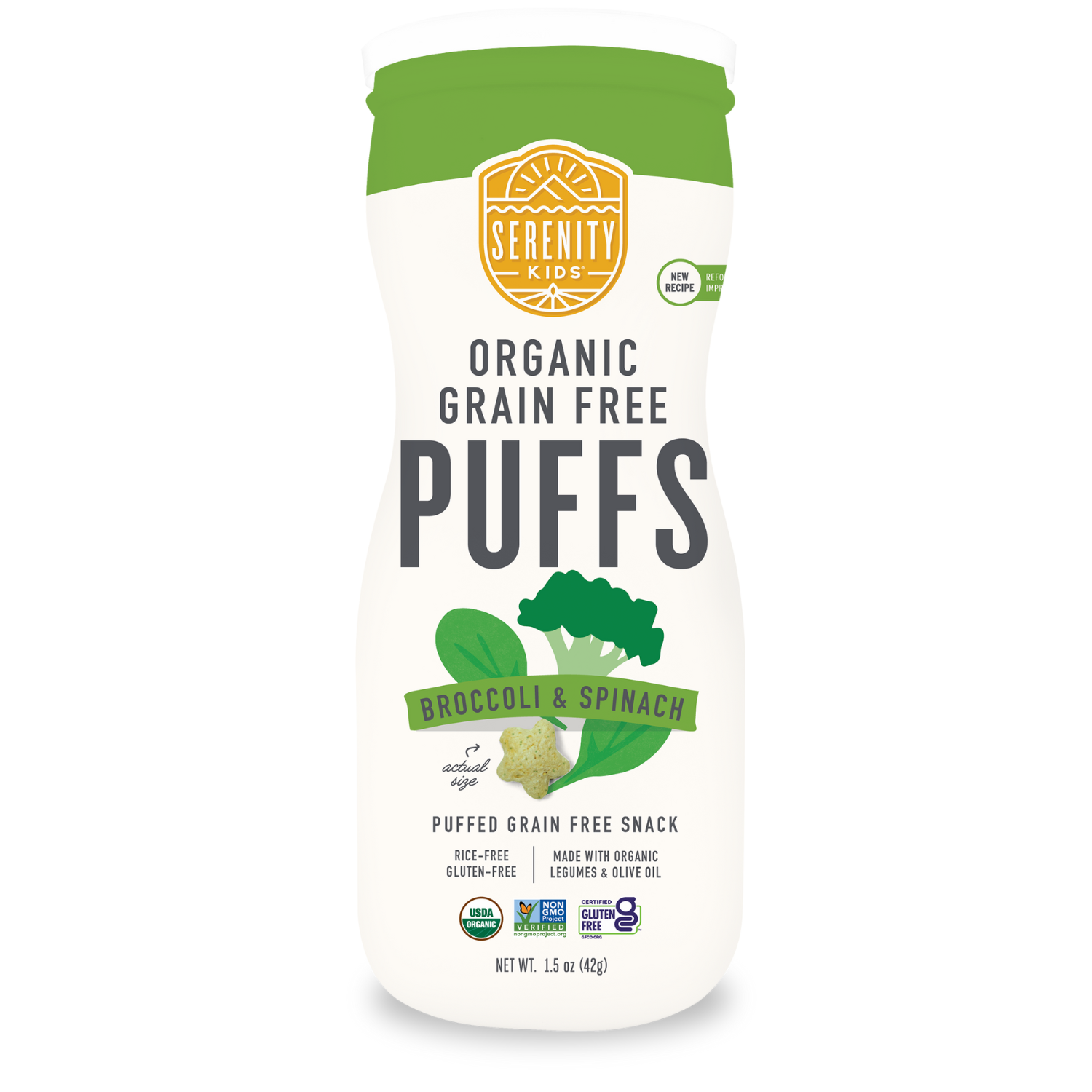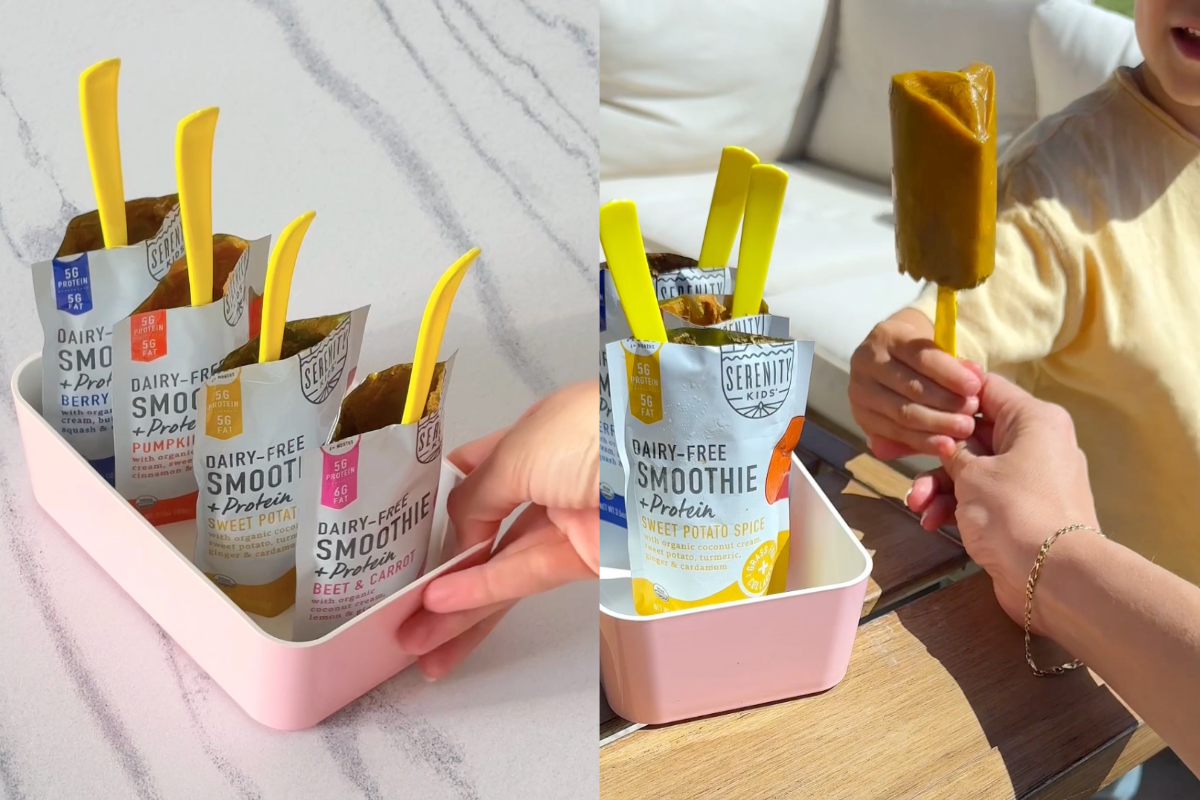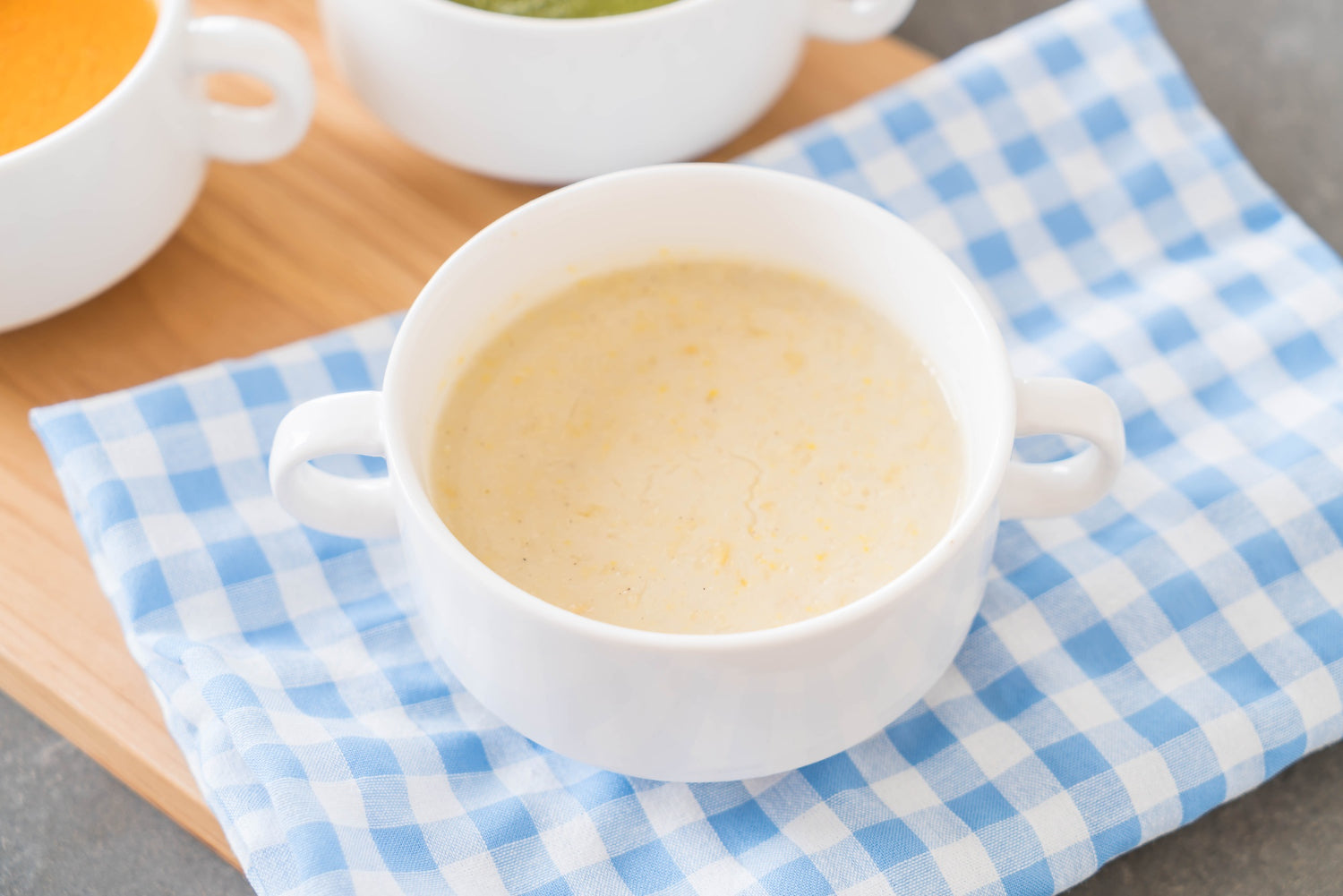At Serenity Kids, we understand the balancing act parents face when it comes to nourishing their babies. As parents ourselves, we know firsthand the challenges of providing the best for your little one, especially when life gets busy. Whether you're heading back to work, juggling multiple responsibilities, or just navigating the journey of parenthood, finding time to pump can be tough.
Breast milk pumping becomes a lifeline for many, offering flexibility while ensuring your baby gets the nutrition they need. But, like all things in parenting, it's not always straightforward. From choosing the right pump to figuring out how to store milk safely, the process can feel overwhelming.
That's why we're here—to share our experiences, offer practical advice, and support you through every step. We want to help you make informed choices about pumping, so you can confidently nourish your baby, no matter where life takes you.
Understanding the Basics: Breastfeeding vs. Pumping
Breastfeeding is a natural and intimate way to nourish your baby, allowing for a strong bond and offering convenience. However, there are times when direct breastfeeding might not be possible. This is where pumping becomes a valuable option. By using a breast pump, you can express milk to be stored and fed to your baby later, which can be especially helpful for mothers returning to work, managing multiple children, or needing to be away from their baby. Check out our blog on how to choose the best baby bottles.
One significant advantage of pumping is that it allows other caregivers, such as a partner, to participate in feeding and bonding with the baby. This involvement can provide crucial support and help balance the demands of parenting. Whether you choose to pump exclusively or occasionally, having the right knowledge and tools will empower you to maintain your milk supply and adapt to your unique circumstances.
The Different Types of Breast Pumps
Breast pumps come in various types, each designed to meet different needs. Choosing the right one depends on your lifestyle, how often you plan to pump, and your personal preferences. Here's a breakdown of the types and the average time required to pump with each:
- Manual Pump: Manual pumps are operated by hand, making them portable and affordable. They are ideal for occasional pumping or for moms who want something light and easy to carry. However, they require more effort and time compared to electric pumps. On average, manual pumping takes about 20-30 minutes per session for both breasts.
- Single Electric Pump: Single electric pumps are powered by electricity or batteries, offering more efficiency than manual pumps. These are suitable for mothers who need to pump regularly but don’t require the speed of a double pump. They allow you to pump one breast at a time, which can be useful if you are breastfeeding on one side while pumping on the other. Typically, single electric pumping takes about 15-20 minutes per breast.
- Double Electric Pump: Double electric pumps allow you to pump both breasts simultaneously, cutting pumping time in half. These are especially beneficial for working moms or those who need to increase their milk supply. The efficiency of double pumping helps maintain a good milk supply, making it a popular choice among many mothers. On average, double electric pumping takes about 10-15 minutes for both breasts.
- Hospital-Grade Pump: Hospital-grade pumps are the most powerful and efficient type of breast pump. They are typically used in hospitals but can also be rented or purchased for home use. These pumps are ideal for mothers who need to pump exclusively, have multiples, or need to establish a milk supply due to separation from their baby. Hospital-grade pumps are multi-user pumps, meaning they are designed for use by multiple mothers with individual pumping kits. They generally pump both breasts in about 10-15 minutes, similar to double electric pumps, but with greater suction power and efficiency.
Choosing the right pump can enhance your pumping experience and make it easier to fit into your busy life. It can also allow others, like a partner, to help with feeding.

Storing and Freezing Breast Milk
Breast Milk Storage Tips
Proper storage of breast milk is essential to ensure that your baby receives the highest quality nutrition. Understanding the shelf life of breast milk at different temperatures and how to use stored milk can help you make the most of your pumping efforts.
-
Understanding Milk Shelf Life:
Breast milk can be stored at room temperature (77°F or colder) for up to four hours, in the refrigerator for up to four days, and in the freezer for up to six months. If you’re using a deep freezer, milk can last up to 12 months, although using it within six months is ideal. -
Using Stored Milk:
When you’re ready to use stored milk, thaw it in the refrigerator or warm it in a bowl of warm water. Avoid using a microwave to warm breast milk, as this can create hot spots that could burn your baby’s mouth and destroy some of the milk’s nutrients. Once milk has been thawed, it should be used within 24 hours if kept in the refrigerator, or within 1-2 hours if left at room temperature. Always smell the milk before feeding it to your baby, as breast milk that has gone bad will have a sour odor. It's important to note that breast milk separation is normal, so gently swirl the milk to mix the fat back in before feeding it to your baby.
Tips for Maximizing Milk Storage Space:
To make the most of your freezer space, consider using stackable containers or specialized breast milk organizers. Laying bags flat to freeze allows you to stack them neatly, saving space and making it easier to access the oldest milk first.

Cleaning and Maintaining Breast Pump Equipment
Keeping your breast pump equipment clean is essential for ensuring your baby’s health and safety. Proper cleaning and maintenance also help extend the life of your pump.
-
Daily Cleaning Routine:
After each pumping session, disassemble the pump parts that come into contact with milk and wash them in warm, soapy water. Rinse them thoroughly and allow them to air dry on a clean, dry towel. If you’re pumping multiple times a day, consider having extra sets of pump parts on hand so you don’t have to wash them after every session. -
Sterilization Techniques:
In addition to daily cleaning, it’s important to sterilize your pump parts regularly, especially if your baby is under three months old or has a weakened immune system. Sterilization can be done by boiling the parts in water for five minutes, using a steam sterilizer, or using microwave sterilization bags. -
How to Properly Store Cleaned Parts:
Once your pump parts are clean and dry, store them in a clean, dry place. To keep the parts organized and dust-free, use a dedicated container or a mesh laundry bag. Avoid storing them in damp or humid areas, as this can lead to mold growth.

Power Pumping to Increase Milk Supply
Power pumping is a technique for increasing breast milk production by mimicking a baby’s cluster feeding pattern. This method is particularly useful for mothers experiencing a dip in milk supply or who need to boost their supply for a specific reason, such as returning to work or exclusively pumping.
-
What is Power Pumping?
Power pumping involves pumping for shorter, more frequent sessions over the course of an hour. This mimics the way a baby feeds during a growth spurt, signaling your body to produce more milk. -
How to Power Pump:
A typical power pumping session might look like this: pump for 20 minutes, rest for 10 minutes, pump for another 10 minutes, rest for 10 minutes, and pump for a final 10 minutes. It’s best to do this once a day, ideally at the same time each day, for a week or until you notice an increase in milk supply. -
When to Power Pump:
Power pumping can be done whenever you feel the need to boost your milk supply. It’s particularly effective during times when your baby is going through a growth spurt, if you’re returning to work, or if you’re transitioning from breastfeeding to pumping.
Building and Maintaining a Pumping Schedule
Creating a consistent pumping schedule is key to maintaining a good milk supply, especially if you’re exclusively pumping or need to pump regularly due to work or other commitments.
-
Creating a Personalized Schedule:
Your pumping schedule should align with your baby’s feeding routine and your lifestyle. If you’re exclusively pumping, aim to pump every 2-3 hours during the day and at least once at night. If you’re pumping while breastfeeding, you can pump after your baby feeds or in between feedings. -
Adapting the Schedule as Baby Grows:
As your baby grows and their feeding needs change, you may need to adjust your pumping schedule. For example, as your baby starts sleeping longer at night, you may be able to drop a night pumping session. However, it’s important to monitor your milk supply and adjust your schedule as needed to maintain it. -
Consistency is Key:
If supply is a concern, consistency is crucial to maintaining a milk supply. Pump at the same times each day and stick to your schedule as closely as possible, even when life gets busy. If you miss a session, try to make it up later in the day.

Pumping While Away from Your Baby
Pumping while away from your baby, whether at work or while traveling, requires some planning and preparation. But with the right strategies, you can continue to provide breast milk for your baby no matter where you are.
-
Pumping at Work:
If you’re returning to work, it’s important to discuss your pumping needs with your employer. Most workplaces are required by law to provide a private space (not a bathroom) for you to pump and a reasonable break time to do so. Set up a comfortable pumping space, bring all the necessary supplies (including a cooler for storing milk if a refrigerator is not accessible), and establish a pumping schedule that works for you. If you struggle to pump in a work setting, try looking at photos or videos of your baby to help get your head out of a work mentality for a moment. -
Traveling and Pumping:
When traveling, plan ahead to ensure you have everything you need to pump on the go. This might include a portable pump, a cooler for storing milk, and a supply of breast milk storage bags. Look for private spaces where you can pump, such as family restrooms, nursing rooms, or even your car. If you’re flying, know the TSA guidelines for carrying breast milk and pumping equipment through security.
Dealing with Common Pumping Challenges
Pumping can sometimes present its own challenges, but understanding how to address them can help make the experience more comfortable and productive.
-
Low Milk Supply
If you’re concerned about low milk supply, there are several strategies you can try to boost it. Staying well-hydrated, eating a balanced diet, and making sure you’re getting enough rest are all important. You can also try massaging your breasts before and during pumping, using heat to encourage milk flow, or incorporating foods and supplements known to support lactation, such as oats, fenugreek, and blessed thistle. If low milk supply is an issue, there are many resources that you can take advantage of, including donor milk. -
Pump Flange Fit
A proper flange fit is crucial for both comfort and milk output. If the flange is too small or too large, it can cause discomfort and reduce the amount of milk you’re able to express. To find the right fit, the flange should create a seal around your nipple without causing pain, and your nipple should move freely in the tunnel without rubbing against the sides. If you’re unsure about the fit, many pump manufacturers offer sizing guides or sample kits. -
Overcoming Pumping Discomfort
Pumping shouldn’t be painful, but it can sometimes be uncomfortable, especially when you’re first starting out. To make pumping more comfortable, start with a lower suction setting and gradually increase it as your body adjusts. Using a lanolin cream or other nipple ointment can also help reduce friction and discomfort. If you’re experiencing persistent pain, it’s important to consult a lactation consultant or healthcare provider to rule out any underlying issues.

Maintaining Mental Health While Pumping
Pumping can be emotionally and physically demanding, and it’s important to take care of your mental health throughout the process.
-
Emotional Challenges of Pumping
Pumping can sometimes feel isolating, especially if you’re spending long hours connected to a pump while others around you are able to feed their babies directly. It’s important to acknowledge these feelings and seek support when needed. Remember, you’re doing an incredible job providing for your baby, whether through direct breastfeeding, pumping, or using formula. -
Finding a Support System
Connecting with other mothers who are also pumping can be incredibly supportive. Whether it’s through in-person groups or online communities, sharing experiences, tips, and encouragement can make the journey feel less lonely. You might also consider reaching out to a lactation consultant for professional guidance and support. -
Self-Care Tips
Taking care of yourself while pumping is just as important as taking care of your baby. Find small ways to relax and recharge during pumping sessions, such as listening to music, reading a book, or practicing deep breathing exercises. Reward yourself for the hard work you’re doing, whether it’s through small treats, a favorite activity, or simply taking a few moments to yourself each day.
Incorporating Serenity Kids into Your Feeding Routine
As your baby grows, their nutrition needs will evolve, and finding the right balance between breast milk, formula, and solid foods is key to their development.
-
When to Introduce Solid Foods
Typically, babies are ready to start solid foods around 6 months of age, but every baby is different. Signs that your baby may be ready include sitting up with little support, showing interest in food, and the ability to swallow small amounts of food without pushing it back out. Serenity Kids’ organic baby food pouches are a convenient and nutritious option for introducing your baby to new flavors and textures. -
Balancing Breast Milk and Formula
If you’re combining breast milk with formula for your toddler, Serenity Kids’ A2 milk toddler formula is a great choice for ensuring your baby gets all the necessary nutrients. A2 milk is easier to digest than traditional A1 milk, making it a gentler option for little tummies. You can start by mixing small amounts of formula with breast milk and gradually increasing the ratio as your baby gets used to the new taste and texture. -
Feeding on the Go
For busy parents, finding time to prepare nutritious meals can be challenging, especially when trying to maintain a pumping schedule. Serenity Kids’ products are designed to make feeding on the go simple and stress-free. Whether you’re traveling, running errands, or just having a busy day at home, the convenient pouches offer a quick and healthy option for your baby, allowing you to focus on what matters most—spending time with your little one.

Conclusion
Pumping breast milk is a powerful way to ensure your baby receives the benefits of breast milk, even when you’re apart. It requires dedication, patience, and the right tools, but as long as your mental health is in a good place, the rewards are worth the effort. By understanding the different types of breast pumps, practicing proper milk storage and equipment cleaning, and finding ways to maintain your milk supply, you can make the pumping journey a positive experience for both you and your baby.
Don’t forget to take care of yourself along the way. Your mental health is just as important as your physical well-being, and seeking support when you need it is a sign of strength, not weakness. Incorporating Serenity Kids into your feeding routine can help simplify mealtimes and ensure your baby gets the nutrition they need as they grow.
Whether you’re a new mom or a seasoned pro, remember that every drop of milk you pump is a testament to your love and commitment to your baby. You’re doing an amazing job, and with the right information and support, you can continue to provide for your little one in the best way possible.
FAQ
- How long does it take to pump breast milk with different types of pumps?
The time it takes to pump breast milk can vary depending on the type of breast pump used. Manual pumps typically take about 20-30 minutes per session for both breasts. Single electric pumps usually require around 15-20 minutes per breast, while double electric pumps can complete the task in about 10-15 minutes for both breasts. Hospital-grade pumps also take approximately 10-15 minutes, but with enhanced efficiency and suction power.
- What is the difference between manual and electric breast pumps?
Manual breast pumps are operated by hand, making them portable and affordable but requiring more effort and time compared to electric options. Single electric pumps are powered by electricity or batteries and offer more efficiency, allowing you to pump one breast at a time. Double electric pumps, on the other hand, enable simultaneous pumping from both breasts, significantly reducing the total time spent pumping. Hospital-grade pumps are the most powerful and efficient, suitable for mothers who need to pump exclusively or have specific pumping needs.
- Which type of breast pump is best for working mothers?
For working mothers, double electric pumps are often the best choice. They allow you to pump both breasts simultaneously, saving time and making it easier to maintain a milk supply while managing a busy schedule. Single electric pumps are also a good option if you only need to pump occasionally. Hospital-grade pumps offer the highest efficiency and are ideal for those who need to pump frequently or establish a strong milk supply, but they are usually more expensive and may require rental or purchase.
- Can I clean breast pump parts in the dishwasher?
Yes, many breast pump parts are dishwasher-safe and can be cleaned in the dishwasher. It's generally recommended to place the parts on the top rack to prevent exposure to high temperatures that could cause warping or damage. After washing, you can use the drying cycle for added convenience, but be sure to check the manufacturer's guidelines for specific cleaning instructions. Regularly inspect and replace any worn or damaged parts to ensure optimal performance and hygiene.
















